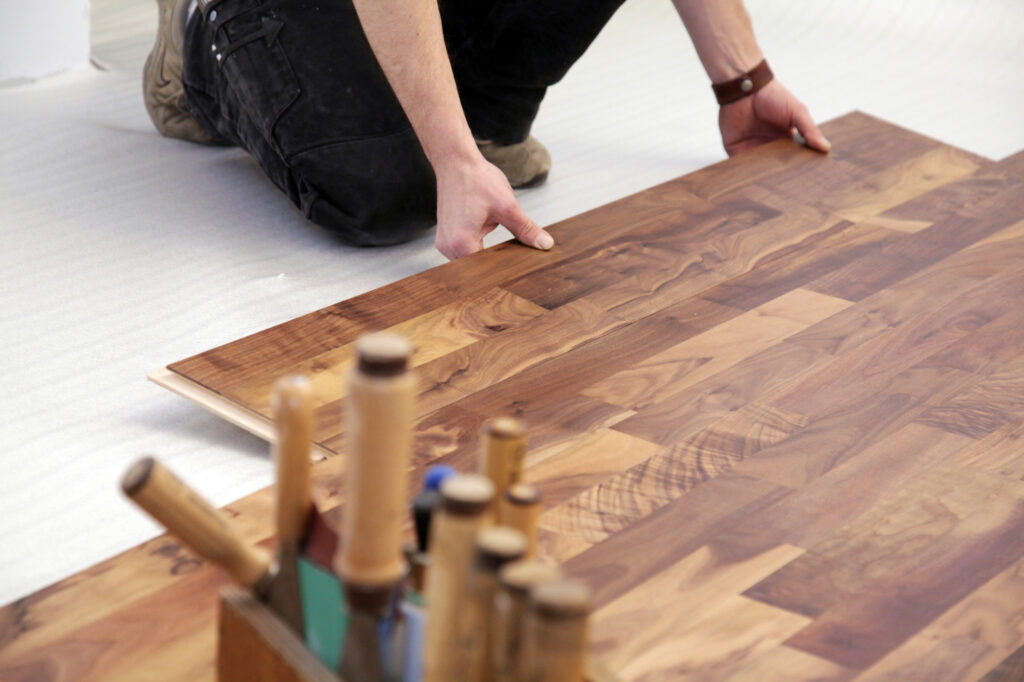8 Tips For a Great Flooring Renovation
There’s a reason why the global flooring market is worth an estimated $388.24 billion. The right type of flooring can make or break a home. Sadly, even the best floors don’t last forever.
If you notice that your floors are looking worn out or dirty, then it’s time for a flooring renovation. Unfortunately, if you aren’t careful it’s easy to pay too much for subpar flooring.
Luckily, in this article, we’ve gathered some tips for planning your next flooring renovation. That way, you get a result that both looks and feels great. Let’s get started!
1. Set a Budget For the Project
Before anything, you should always set a budget for your floor renovation project. This is important because it will help narrow down the best choice of materials and contractors that you can choose from.
Keep in mind that the average floor renovation job costs between $2,500 and $4,000. However, this can easily go higher or lowers depending on the material you’re using and the size of the job.
If you aren’t sure whether or not you can afford floor renovation, then don’t panic. There are a variety of financing options, both through business and home renovation loans. Just make sure that you shop around so that you can find the best one for your needs.
2. Clear the Room of Furniture
Before you decide on the right floor material for your needs we always recommend clearing the room you plan on renovating all its furniture. You will need to do this eventually anyway. However, at this stage, it’s important to get a feel of the room.
Without all the furniture you get a better sense of what the flooring looks like. Turn on all of the lights, open the windows, and take a step back and look. What material and colors might naturally compliment the style of the room?
During this time you should also look for any lumps or mold. This will need to be dealt with before you can proceed with the renovation process.
3. Decide On a Flooring Material
The two biggest determining factors for flooring material are the type of room you’re renovating and your budget. Popular kitchen floors, like tile or vinyl, don’t belong in a bedroom.
However, there are still a lot of decisions to choose from. Most of the time it comes down to personal preference. But, some options just look great in certain rooms. We’ll go into some more specific material tips later in the article.
For now, it’s important to start thinking about what you want personally out of your floors and whether or not you can afford it.
4. Hire a Great Flooring Contractor
When you see the costs of contractors you might be tempted to try renovating your flooring by yourself. However, we recommend avoiding this route if you can help it. Ultimately, you will likely end up spending more money fixing mistakes that you make.
Instead, look for a contractor that specializes in flooring installation.
Ideally, you want one that provides you with an accurate estimate and no hidden fees. Experience is also a big plus since it means they have a vast knowledge of the different floor types that they can offer you.
5. Use Durable Hardwood For Children, Dog, and Cats
Any dog and cat owner knows that kids and animals can often make messes on the floor. This isn’t a great fit for material like carpet that stains easily. Instead, we recommend durable hardwood.
Ideally, it will be an engineered wood with laminate on it. This will make it extra strong and scratch-resistant from pet claws. Just keep in mind that you will likely pay more for it. However, it makes up for this with its durability.
6. Renting to Tenants? Go With Carpet
If you’re renting to tenants, then consider going with carpet. There are two main reasons for this. For one thing, it’s often more affordable. So, you won’t spend as much money replacing it.
However, it also has a very quick installation time. As such, you can get a quicker turnaround between tenants.
7. Tiles Are Great For Rooms With Lots of Bacteria
When renovating flooring in your kitchen or bathroom it’s important to pick a naturally bacteria-resistant material. There are few materials that like this besides tile. As such, we usually recommend tile for these areas.
On top of being bacteria-resistant, there also easy to clean. So, it’s a bit of a no-brainer.
8. Prepare For It to Cost More Than Your Budget
At the beginning of the article, we stressed the importance of setting a budget. While this is a vital step it’s also important to remember that it’s not exact. Inevitably, you will run into road bumps that will throw off your budget.
This might be the installer needing more supplies, or the job taking longer than expected. Regardless of what the cost is from, it’s important to remain a bit flexible with your budget.
We recommend saving at least 10% more than what you think the job will cost. This will give you a bit of wiggle room when it comes to completing the job.
Enjoy Learning About Flooring Renovation? Keep Reading
We hope this article helped you learn some tips for your next flooring renovation process. While all the steps on this list are important, the most important one is to find a good contractor that you trust.
These professionals can help you decide which option is best for your home and carry it out too. So, start researching floor contractors in your area, and don’t stop until you find the best one.
Did you enjoy this article? If the answer is yes, then you’re in the right place. Keep exploring to find more topics that you’re sure to love.
